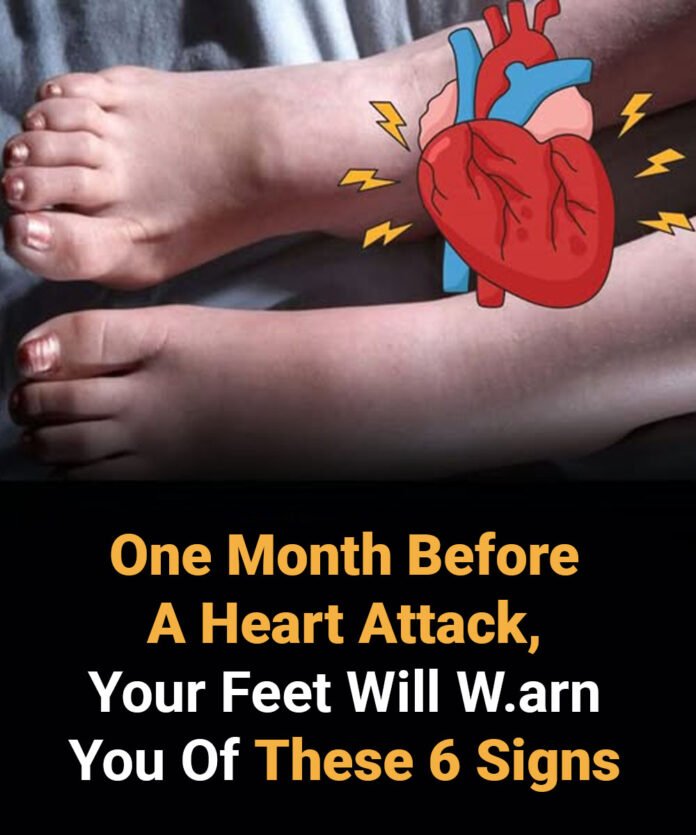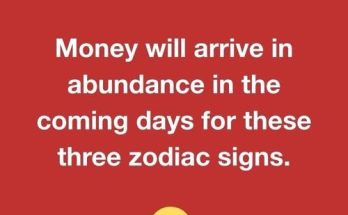We rely on our feet for everything—walking, standing, exercising, even just keeping our balance. But most people don’t realize that these hardworking parts of the body might also be one of the earliest places to reveal signs of serious heart trouble.
In fact, your feet may be sending out subtle warnings of a heart attack long before it strikes—sometimes as early as a month in advance. These signs often go unnoticed or are chalked up to aging or fatigue. But they may be your body’s way of asking for help.
While not every ache or cold toe means danger, it’s important—especially for older adults—to learn what to watch for. Your heart and your feet are more connected than you think.
Why Your Feet Can Reveal Heart Problems
The connection is simple: your heart pumps blood to every part of your body, including the furthest points—your feet. When circulation becomes compromised due to heart dysfunction or blocked arteries, your feet are often among the first places to show it.
These changes can appear quietly and subtly. You may not feel chest pain or shortness of breath right away, but what’s happening in your feet could reflect the early stages of cardiovascular decline.
Here are the six foot-related signs that might appear weeks—or even months—before a heart attack.
1. Cold Feet or Toes (Even in Warm Weather)
Do your feet feel cold all the time? Especially when the rest of your body feels warm?
Cold feet can be a sign that your heart isn’t pumping blood efficiently, which means your extremities are being deprived of warmth and oxygen.
This isn’t just a comfort issue—it can point to reduced circulation caused by heart disease. While cold feet can also be related to thyroid issues or diabetes, it’s worth checking in with your doctor if it becomes persistent or noticeably worse.
2. Swelling in the Feet and Ankles (Edema)
Notice your socks leaving deeper imprints? Or that your shoes feel tighter in the evening?
This type of swelling, known as edema, may occur when your heart is no longer pumping effectively, causing fluid to build up in your lower legs and feet.
Swelling tends to worsen:
- At the end of the day
- After long periods of sitting or standing
- In both feet and ankles simultaneously
If you’re experiencing this along with shortness of breath or fatigue, it could be an early sign of congestive heart failure.
3. Foot Discoloration (Blue, Purple, or Pale Skin)
Healthy feet should have a natural, pinkish tone. But if you notice your feet turning:
- Bluish or purplish – this may suggest low oxygen levels in your blood
- Pale or ashen – this could signal restricted blood flow to the extremities
These color changes might indicate circulatory problems, especially if they come and go or are accompanied by other signs like pain or numbness.
Discoloration may be particularly noticeable in cold environments or after physical activity, and should never be ignored.
4. Numbness or Tingling in the Feet
A tingling or “pins and needles” sensation that occurs without warning—or gets worse with activity—could be a sign of peripheral artery disease (PAD), a condition where narrowed arteries reduce blood flow to the limbs.
PAD is strongly linked to heart disease, and often serves as a warning sign that the arteries near the heart may also be blocked.
You may notice:
- Numbness in the toes or soles
- A burning or prickling sensation
- Relief when you stop walking or elevate your feet
If left untreated, PAD can increase the risk of heart attacks and strokes significantly.
5. Sores or Wounds That Won’t Heal
Have you noticed cuts, blisters, or sores on your feet that seem to linger or resist healing?
Slow-healing wounds, particularly on the toes or heels, can indicate chronic poor circulation, which deprives the skin of the nutrients and oxygen needed to repair itself.
This symptom is especially dangerous for people with diabetes, but even in non-diabetics, it can signal early heart disease or vascular damage. Over time, these untreated wounds can lead to infections or even amputations in severe cases.
6. Pain When Walking (Claudication)
If your feet or calves cramp or ache while walking, but the pain eases when you stop, it could be more than just fatigue—it may be claudication, another hallmark of peripheral artery disease.
Claudication often occurs:
- After short periods of walking
- In both legs, though sometimes one side is worse
- As a recurring symptom that worsens over time
This discomfort is a sign that your muscles aren’t getting the oxygen-rich blood they need during movement, and it’s one of the strongest predictors of future cardiovascular events, including heart attacks.
When to See a Doctor
While these foot-related signs don’t guarantee a heart attack is imminent, they are all signs that your cardiovascular health could be compromised.
Pay attention to:
- New or worsening symptoms
- Symptoms that appear in combination (e.g., swelling + numbness)
- Any pain that interferes with walking or daily activity
If you’re noticing these changes, don’t wait. Early evaluation and treatment can often reverse or slow the progression of heart-related conditions.
What You Can Do Today
If you or someone you love is noticing these warning signs, here’s how to take immediate action:
1. Schedule a Check-Up
Ask your doctor for a complete cardiovascular evaluation, especially if you have risk factors like high blood pressure, high cholesterol, diabetes, or a family history of heart disease.
2. Monitor Other Symptoms
Keep an eye out for other common heart attack warning signs, such as:
- Chest pressure or tightness
- Shortness of breath
- Sudden fatigue or lightheadedness
- Pain radiating to the jaw, neck, or arm
3. Get Screened for:
- Blood pressure
- Cholesterol levels
- Blood sugar and insulin resistance
- Circulation and vascular health
Early intervention is key to preventing more serious outcomes like a heart attack or stroke.
Listen to Your Feet—They May Be Whispering Warnings
Your feet do so much more than support your body—they may be quietly alerting you to serious internal issues. For many older adults, especially those over 60, these signs are easy to dismiss. But recognizing them early could save your life or the life of someone you love.
A heart attack doesn’t always start with chest pain. Sometimes, it starts with cold toes. Or swollen ankles. Or a sore that refuses to heal.
So take the time to look down. Your feet may be trying to tell you something your heart can’t say out loud—yet.



